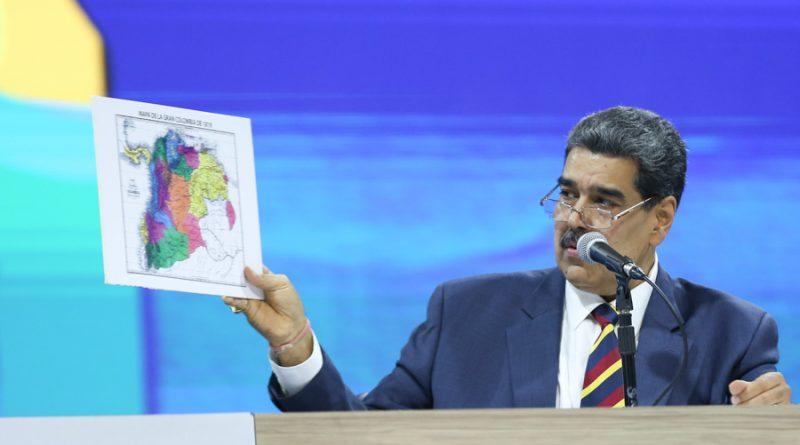In a contribution from the Presidential Commission for the Defense of Essequibo, the President of the Republic, Nicolás Maduro, presented the six stages that characterize the historical development of the controversy over the territory of Guayana Esequiba, a pedagogical initiative aimed at promoting debate » to indicate the directions for the recovery of our rights.”
During his speech at the Act of National Union in Defense of Guayana Esequiba, which took place at the Teresa Carreño Theater in Caracas, he stressed that the definition of historical moments will also allow the Venezuelan people to decide clearly what their vote in the advisory referendum on Sunday, December 3.
In this sense, he reiterated that the six stages “will contribute to a coherent knowledge of the history of our territory and the fight we have given for the recovery of Guayana Esequiba, from the dispossession to which we were subjected by the British Empire» to reach simple to Venezuelans “to present correct perspectives on their decision on historical issues of the present and future.”
Following, learn about the six moments that define the historical development of the controversial territorial dispute between the Bolivarian Republic of Venezuela and the Cooperative Republic of Guyana:
1. Formation of the territory (Colonial period and Independence period). It began in 1492 with the arrival of European colonialism to the American lands, extending until 1840, where the territory of what is Venezuela was formed.
2. Period of aggression, dispossession and arbitration fraud. It takes place in 1840, precisely, when the British Empire – through illegal tricks – takes the first steps to enter the territory of the Republic. It culminates in 1899, the year in which the fraud of the Paris Arbitration Award was consummated.
3. Imperial gunboat diplomacy, denunciation of fraud and the Geneva Agreement. Defined between 1900 and 1966, it refers to the period in which Venezuela went from a time of division, threats of blockades and military invasions to reaction, characterized by denunciation and international achievements in the diplomatic area through the signing of the documents that led to the drafting, acceptance and subscription of the Geneva Agreement of February 17, 1966.
4. Application of the Geneva Agreement, emergence of the Cooperative Republic of Guyana and reservation presented by Venezuela on the recognition of the State that emerged from British Guyana. This stage, which focuses on the period between 1966 and 2015, involves the practical application of the Geneva Agreement, as well as the options stipulated in the document and the Charter of the United Nations; and the search for a peaceful and satisfactory solution for the parties.
5. Guyana assumes a belligerent position. It covers the 2015-2023 period, especially the events that led to Venezuela’s reaction and the calling of the consultative referendum in defense of Guayana Esequiba. In this regard, it describes the continued violation of international law by the Cooperative Republic of Guyana, as well as its pacts with ExxonMobil and the United States Southern Command that turn their backs on the Geneva Agreement.
6. Advisory referendum. Located in our actuality, it projects a broad vision of the new stage of the Bolivarian Republic of Venezuela. It is part of this line, in the efforts to defend Guayana Esequiba, whose territory belongs to Venezuelans by tradition, history and law.
